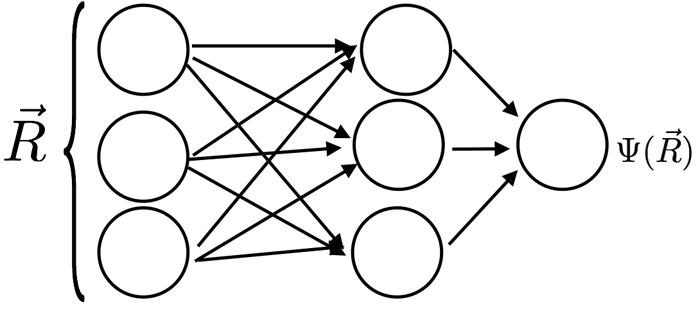 |

Application of Monte Carlo methods to the solution of interesting problems in physics, and particularly in Quantum Theory, has a long history. The potential capability of exactly solving for eigenstates of a given Hamiltonian collides with some well-known fundamental obstacles, such as the fermion sign problem which is caused by an exponentially decaying signal to noise ratio in the simulation. This problem spans fields such as condensed matter, quantum chemistry, lattice QCD and nuclear theory.
A main activity of this program was representatives from all four subfields discussing innovative algorithm techniques toward attenuating such problems. Example approaches include moving the sign problem into the complex plane, doing analytical continuation on eigenstates, improved optimization of eigenstates and using quantum computers to simulate quantum mechanics.
Here we highlight the latter two approaches. Variational approaches have historically been used to approximate ground states as well as more recently as a starting point for propagation in Euclidean time (both for relativistic and non-relativistic problems). While variational methods are amongst the oldest approaches to quantum problems, many novel approaches are still being developed from better optimization and more efficient selected CI to the application of machine learning methodology to represent wave-function amplitudes. In this latter approach, machine learning architectures such as restricted Boltzmann machines and feed-forward neural networks can be used as a black-box which takes configurations and generates amplitudes. In principle, as the number of neurons is increased, the exact answer is approached with outstanding questions focused on the rapidity of this convergence and the optimal choice of machine learning architecture.
Another alternative approach under discussion was the outlook provided by the rapid development of quantum computers, which open a concrete possibility of performing actual calculations within the next decade. Discussions ranged from the evolution of cold-atom based simulators to algorithmic advances. It emerges that quantum computation and quantum Monte Carlo methods share several aspects, beginning with the intrinsic stochastic nature of the algorithm. Quantum Monte Carlo could benefit of Quantum Computing in terms of optimization of trial solutions, access to real time dynamics, or even as a co-processing tool in certain specific situations. The possible strong interaction between these communities emerges naturally and should be actively pursued in the near future.
|


